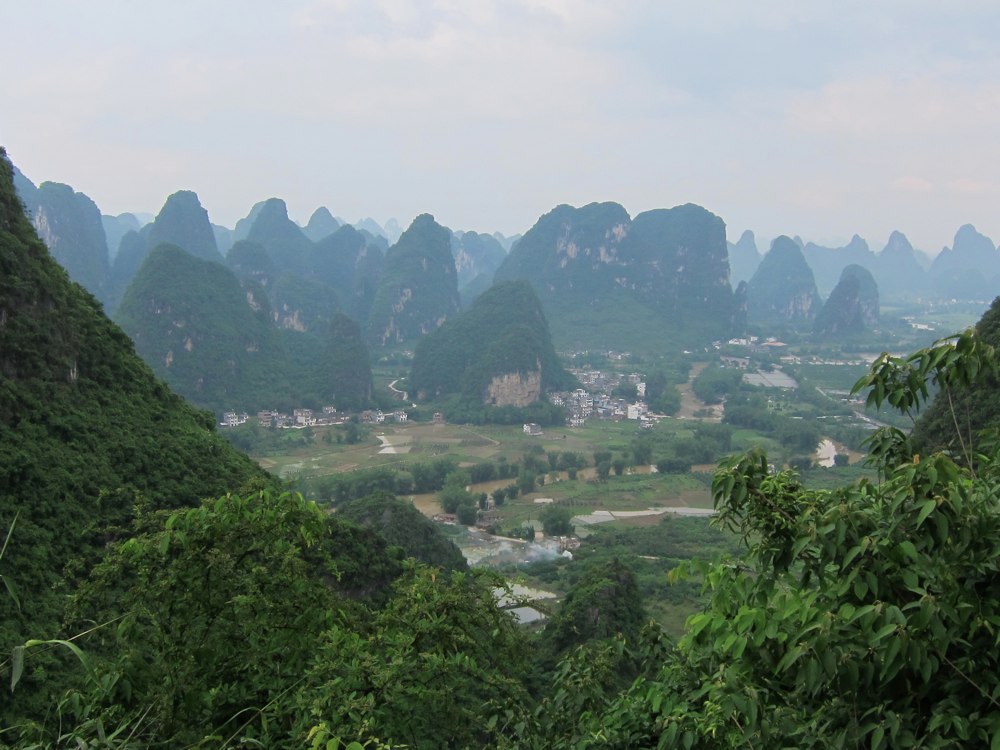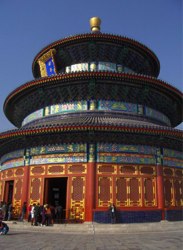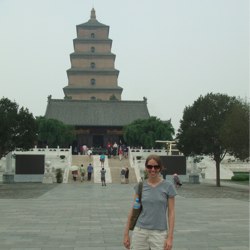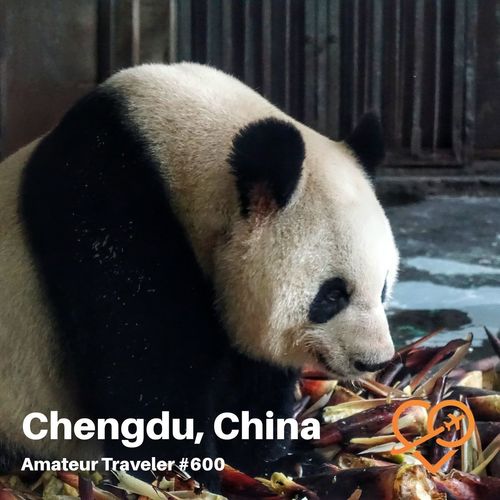The Amateur Traveler talks to Shawn Farris about his recent trip to the Guangxi region in China.
Guangxi is a lesser-known but spectacular region in southwestern China known for its rugged karst mountains and green terraced rice paddies. Shawn explored the area hiking, biking and even kayaking through the countryside. Shawn describes it as a region that still has that “wide open, blue sky, rural feel to it.”
The region can be accessed through the cities of Guilin or Yangshuo. During his trip, Shawn met the strongest lady he had ever met as well as two of the most enterprising sellers of soda.
right click here to download (mp3)
right click here to download (iTunes version with pictures)
Show Notes
Guangxi
Travel to Transylvania in Romania – Amateur Traveler Episode 161
Guilin
Yangshuo County
Moon Hill
News
How this man flirted his way into a lifetime ban from Delta Airlines
Feds threaten to ground Texas airplanes if anti-groping bill becomes law
Pilot Incapacitated, Wife Forced to Fly Small Plane
Community
Vancouver Meetup – Jun 10, 2011
Emena is listening from Zurich
- Get a Car Rental
- Buy Travel Insurance
- Book Your Accommodation HERE
- Get an eSim to be able to use your smartphone abroad.
- Search for Great Tours HERE
- Get a universal plug adapter
+Chris Christensen | @chris2x | facebook
3 Responses to “Travel to the Guangxi region of China – Episode 282”
Leave a Reply
Tags: audio travel podcast, china, podcast


 Travel to the Yunnan Province of China – Episode 319
Travel to the Yunnan Province of China – Episode 319 Traveling to Beijing, China with a Tour – Episode 187
Traveling to Beijing, China with a Tour – Episode 187 Travel to Xi’an, China – Episode 258
Travel to Xi’an, China – Episode 258 Travel to Chengdu, China – Episode 600
Travel to Chengdu, China – Episode 600

Barry S. Kramer
Says:May 30th, 2011 at 2:09 pm
Hi Shawn and Chris;
Listening to your recent podcast on the Guangxi region of China brought back wonderful memories of our trip there last summer. After attending the 2010 Expo in Shanghai for a week my family and I spent four days in and around Guilin touring the region.
I agree with Shawn that in addition to the incredible scenery, ruralness, and blue skies, a major part of the appeal of this region is that many Westerners do not make it this far into China. The area is very touristy, but the majority of the travelers are native Chinese.
I would definitely recommend everything that Shawn experienced on his trip. The rice fields of Longsheng sometimes referred to as the Dragon’s Backbone Rice Terraces, were beautiful to climb and photograph. It is also amazing how the small villages, complete with rooming houses and restaurants cling to the mountain trails that wind there way through the terraces. The scenery of Guilin and Yangshuo were unforgettable and there are many things to do and experience in each location. Yes, this area is very touristy and you will experience every inconvenience, oversell, and potential scam associated with Chinese tourist attractions. Regardless, the area is amazingly beautiful!
There are a few things that Shawn did not mention that I would recommend. One of the most popular ways to get from Guilin to Yangshuo is take the boat ride along the Li River. Even though this is probably the most famous tourist experience in the area, it is genuinely a beautiful and peaceful boat trip that lasts for about 4 to 5 hours. Along the way you get to see remarkable karst formations (one of which is featured on the Chinese 20 Yuan note) as well as the river traffic and scenery. Some reviews will tell you that the boat trip is not worth it, but we thoroughly enjoyed it. There are many different boats you can take, but the boats usually reserved for Western tourists are less crowded and it was very easy for all of us to take a multitude of photographs. My wife even purchased some fruit from a local merchant who came up alongside our boat to sell to her. The boats arrive along the end of Western street in Yangshuo, and it is easy to get transportation back to Guilin.
There are many small boat trips that can be taken on smaller bamboo raft boats in and around Yangshuo that are well worth the experience. We passed by the Yangdi-Xingping scenic area on the way to Moon Hill and found it remarkably scenic. We were also told that the Yulong River valley was similarly in its scenic beauty. Also in Yangshuo, we enjoyed the night time show “Impression Sanjie Liu” which was directed by Yimou Zhuang, the director of the 2008 Opening Ceremony of the Beijing Olympics. The show boasts a cast of over 600 performers, but the real uniqueness is that the Li River and mountains are lighted and used as a backdrop for the performance.
In addition to all the wonderful things to do in Yangshuo, I would not sell Guilin itself short. There are many karst formations that can be climbed in the city as well as caves to explore. Yes, these are touristy, but they are also unique and fun to do. The city boasts a large night market in the center of the city as well as some beautiful parks. The Two Rivers Four Lakes area is colorfully lit at night and is surrounded by 19 bridges that are styled after famous bridges in China and around the world (we did spot a replica of the Golden Gate Bridge and London Bridge). We also enjoyed listening to some performers singing opera in the park.
I totally agree with Shawn, that if you have a few extra days in China, then it is well worth visiting the Guangxi region. There are many regions of China that are unique in their scenic beauty, and the Guangxi region is definitely near the top.
Your fellow amateur traveler,
Barry S. Kramer
ChinaTravelBlogs
Says:June 7th, 2011 at 9:15 pm
Featured in Best of the Net Weekly: Our favorite China travel stories from around the web on ChinaTravel – The people’s guide to China.
Kathy
Says:March 26th, 2012 at 2:24 pm
Still catching up on episodes I missed. I was rather surprised to hear this area described as being off the tourist trail. I visited Guilin and took the river trip to Yangshuo with a tour group back in 1997, and see that on a LOT of tour itineraries now. Yangshuo had been discovered by the beer and banana pancake brigade even earlier and was already firmly on the backpacker circuit. The rice terraces are a bit less well known, but still, I’ve see a number of people posting about hiring a car and driver to visit them.
For more off the beaten track places I’d head further southwest, or all the way west to Xinjiang province – but south of the Taklamaklan these days, not north.